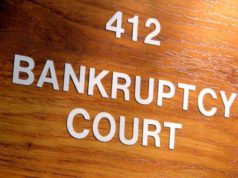
Accessing bankruptcy information
Sources for bankruptcy information can be accessed either from official governmental authorities, particularly from those possessing jurisdiction over bankruptcy proceedings, or from professional and legally certified practitioners with respect to bankruptcy proceedings. Bankruptcy information can allow people to recognize both the benefits potentially offered by this kind of financial instrument, as well as the disadvantages and difficulties inherent in carrying out a bankruptcy with regard to an entity’s financial assets.
Constitutional bankruptcy information
Bankruptcy proceedings are transacted at a federal governmental level, a provision which proceeds from the original place retained for bankruptcy proceedings in the country’s founding national document, that of the U.S. Constitution. In particular, people can refer to this original bankruptcy information in the location of Clause 4 of Section 8 of the Constitution’s Article 1. This language on applicable information refers to the power held by Congress toward creating “uniform Laws on the subject of Bankruptcies throughout the United States.”
USC Title 11 sources for bankruptcy information
Later but equally relevant bankruptcy information has also arisen from the statutes passed into law by the U.S. Congress under the mandate accordingly granted to that legislative body through the aforementioned Constitutional language. As of the present, the main body of legal, statutory bankruptcy information is referred to as the Bankruptcy Code.
This section of bankruptcy information can be understood as comprising Title 11 of the United States Code, or U.S.C. The United States Code, as a whole, is a collection of statutes and provisions toward legal language which allows people to access information as to how federal statutes will be interpreted and applied in the jurisdiction of the U.S. For one, the “Chapters” of filings through which bankruptcy transactions can be carried out in the U.S. refer to the different sections of Title 11 of the United States Code, with particularly important areas consisting of Chapters 7, 11 and 13, among others.
Other United States sources for bankruptcy information
Bankruptcy information is also contained elsewhere in the overall source of the United States Code, as in other areas of law which also occasionally or potentially pertain to the subject of bankruptcy transactions and proceedings.
Bankruptcy information, as such, might be located from the area of U.S.C. Title 26, on the overall subject of “Crimes,” which includes data on the tax burden and potential alterations to that burden potentially incited by the performance of a bankruptcy transaction. Additionally, people can further refer to the source of U.S.C. Title 28, on “Judiciary and Judicial Procedure,” which illuminates aspects of how the U.S. court system will handle bankruptcy information.
Legislation pertinent to bankruptcy information
As of the present, the generally applicable source of legislative bankruptcy information can be understood as stemming from the package of laws passed into effect in 1978 as the Bankruptcy Reform Act. In addition, the most recent change in applicable bankruptcy information can be understood as having come with the Bankruptcy Abuse Prevention and Consumer Protection Act (BAPCPA), which was passed into law by Congress in 2005.
















